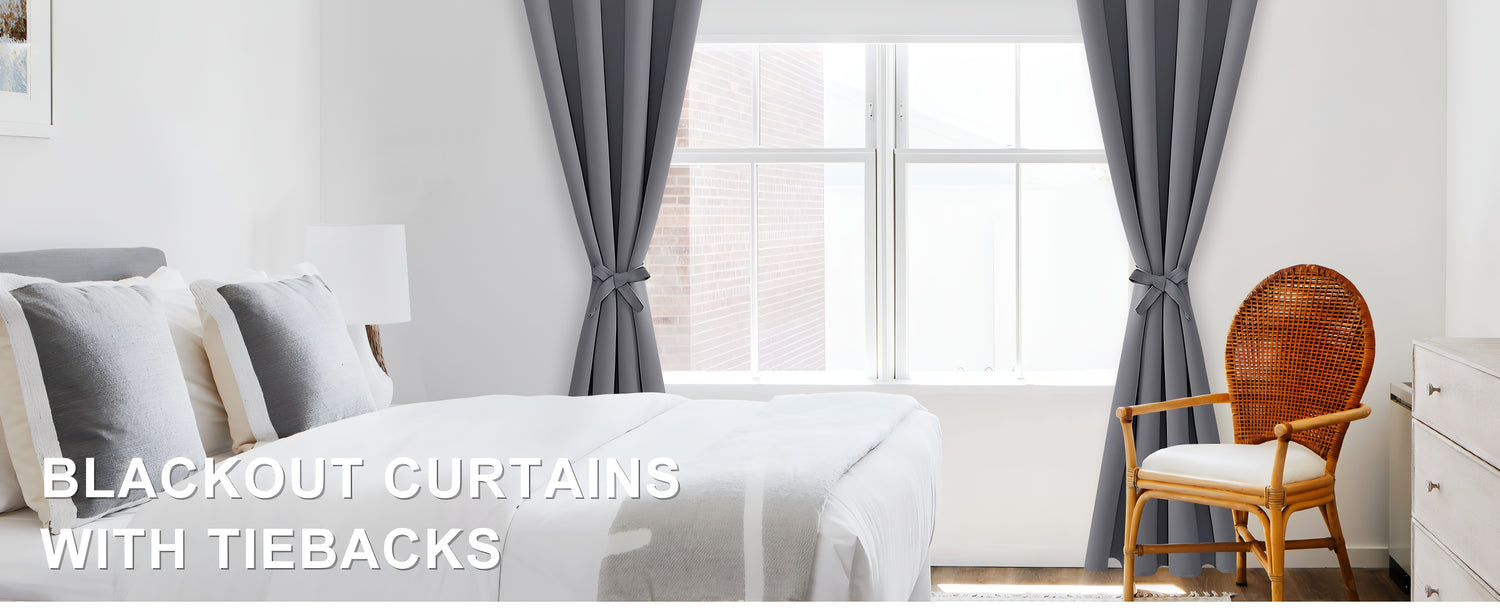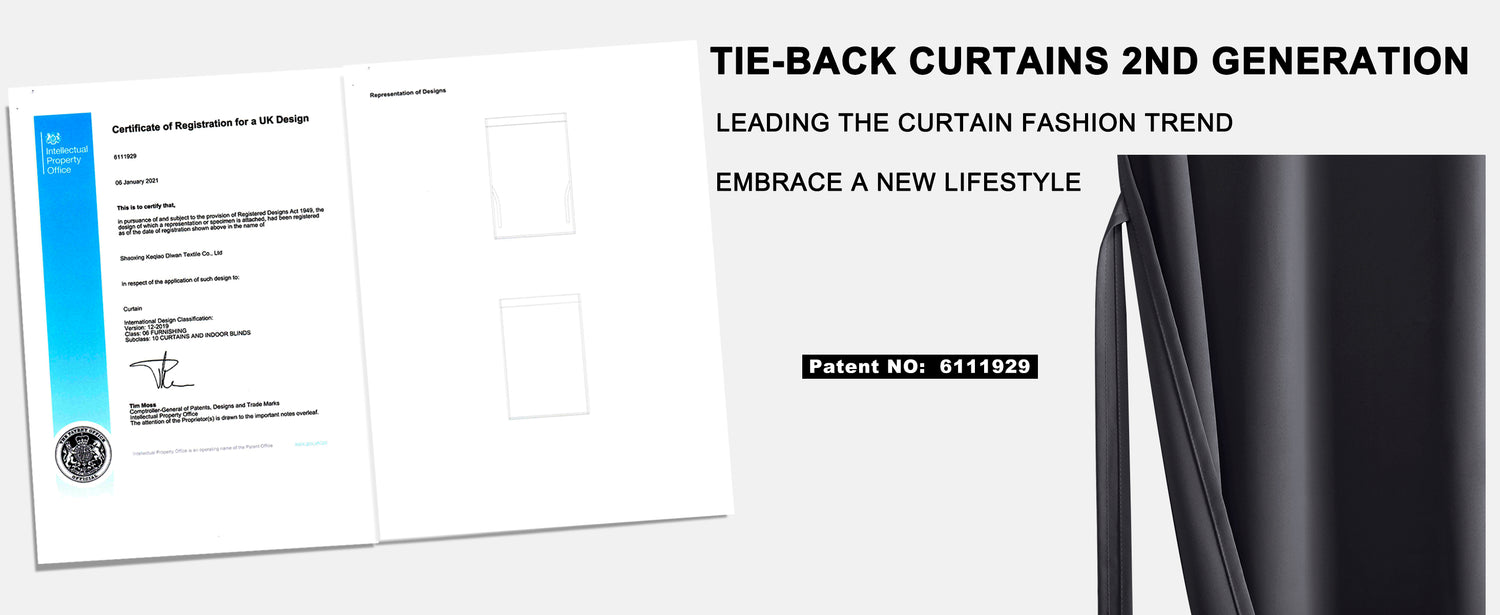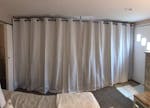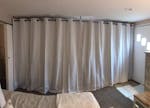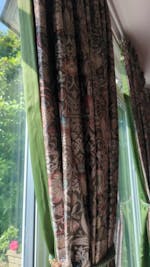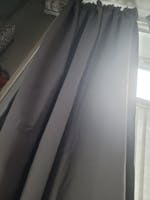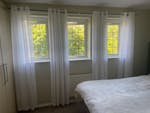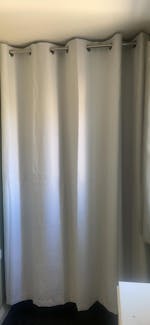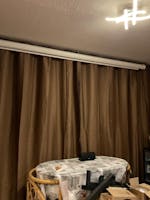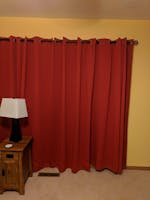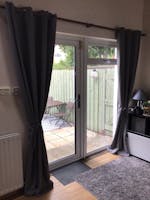
Perfectly tightened for a lightweight, stylish look
Choosing the right tieback can elevates your window treatment from merely practical to truly polished.
Shade Right, Sleep Tight
Elevate your home’s comfort and style with our versatile collection of blackout curtains, designed to adapt seamlessly to any space. Whether you’re enhancing relaxation or optimizing functionality, our curtains deliver unmatched light control, privacy, and energy efficiency.
Elevate Your Home with the Bundle
Crafted for You, Made Easy.
Design Your Dream Space with DWCN Curtains & Décor.
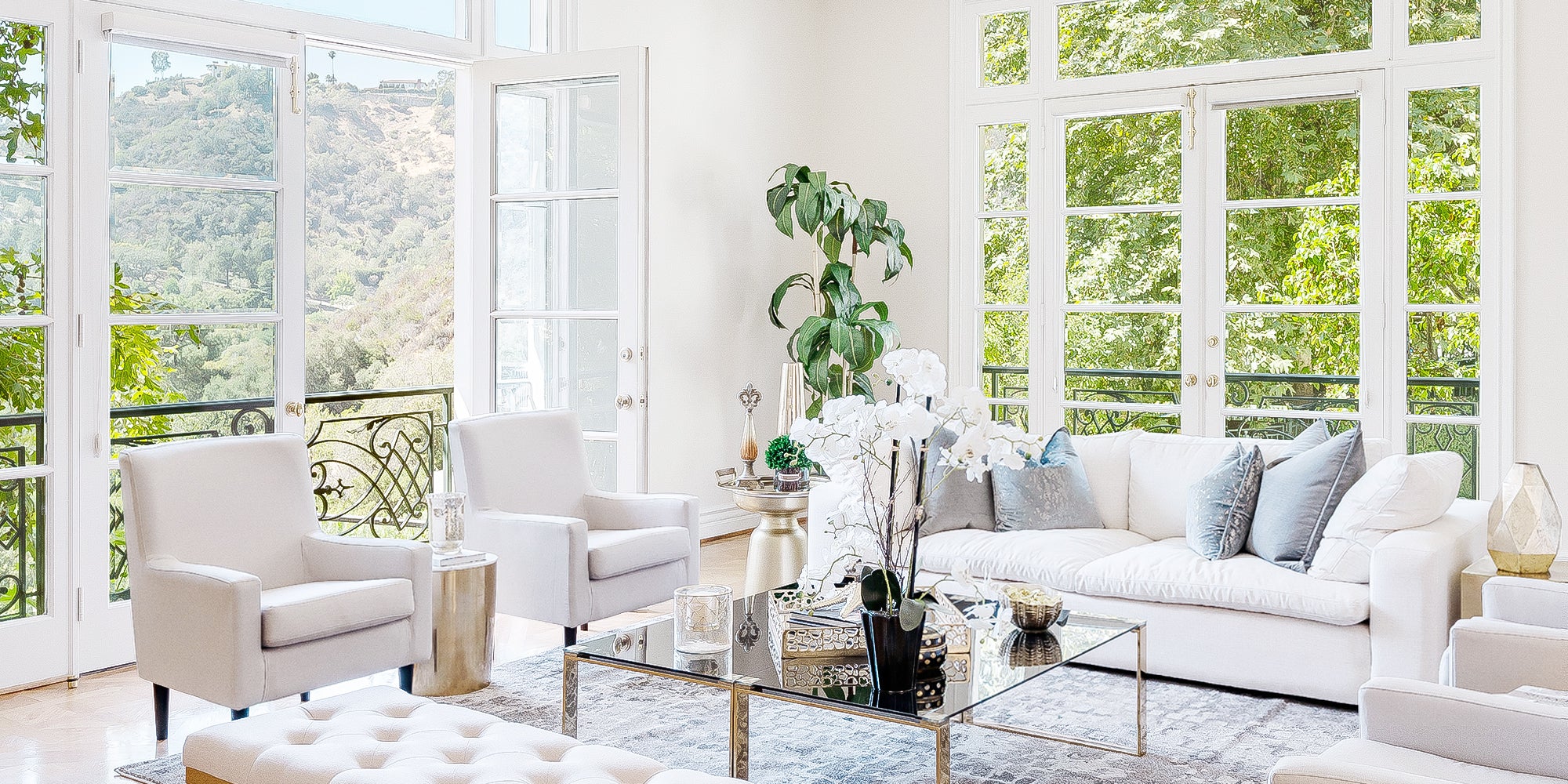
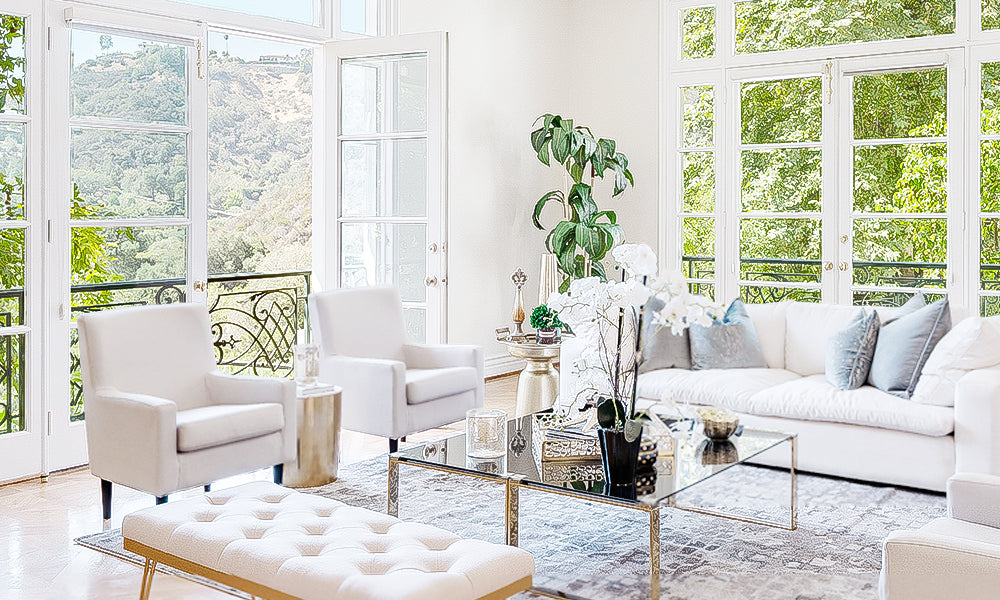
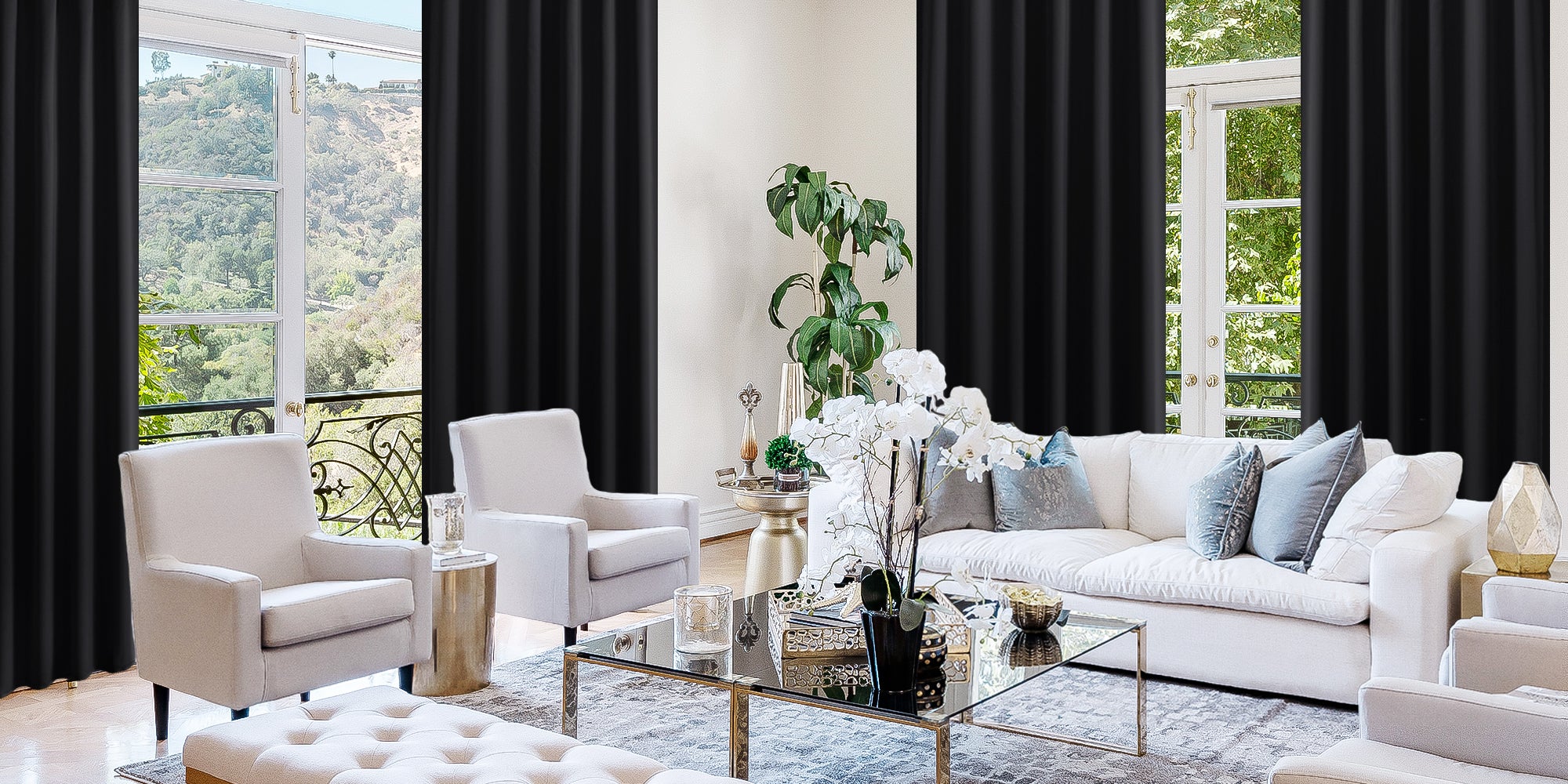
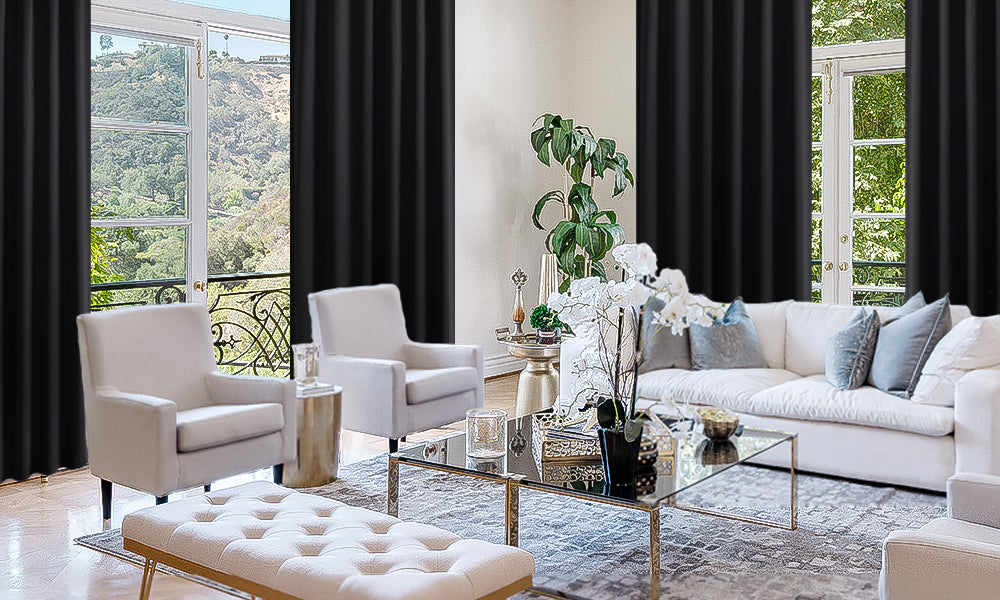

#DWCN Home
Journey through our exclusive lookbook showcasing professional-styled installations of our collections in actual residences. From minimalist urban lofts to cozy countryside retreats, uncover sophisticated styling techniques and elevate your décor scheme with insider design secrets.
We Are Recognized By
Eco-Friendly, Sustainability, Harmless




Let customers speak for us
Blog posts
Beat the British Summer Heat: Choosing the Perfect Bedroom Curtains
Hey lovely decorators and sleep seekers! As the days get gloriously longer (hello, 5 am sunrises!), and we're all dreaming of cooler nights for a proper kip, I've been getting so many DMs asking: "What on earth are the best curtains for a UK summer bedroom?" Trust me, I feel you! That early morning glare or stuffy, sun-baked room is not the vibe for sweet dreams. So, ditch the winter heaviness! Choosing the right summer curtains isn't just about looks (though that matters!), it's about light control, temperature regulation, and creating a serene sanctuary. Let's break down the key players: Colour & Material. I've tested loads over the years in our temperamental British climate, so here are my tried-and-true tips! 1. Colour: Your Secret Weapon Against the Sneaky Sun Think of your curtains as your bedroom's personal climate control. Colour makes a HUGE difference to how much heat sneaks in: Light & Bright is Best: Whites, Ivories, Creams: My absolute go-to for summer! These superstars reflect sunlight instead of absorbing it, keeping your room noticeably cooler. They instantly create that fresh, airy, coastal-cottage feel we all crave when the sun's out. Imagine beautiful crisp cotton or textured linen in pure white – instant serenity! (Plus, they go with everything). Soft Pastels (Think Sky Blue, Lavender, Mint, Pale Buttercup): Want a hint of colour? Pastels are your friend! They reflect heat almost as well as whites but add a gentle, calming personality. Perfect for creating a tranquil retreat without the thermal downside of darker shades. John Lewis often has gorgeous linen-blends in these tones. Light Neutrals (Stone, Oatmeal, Light Taupe): Super versatile and still great heat reflectors. They add a touch of warmth without the bake. Ideal if you love that sophisticated, neutral palette year-round. Dark Drama? Tread Carefully (But It Can Work!): Deep Navy, Charcoal, Forest Green, Black: Gorgeous for winter cosiness? Absolutely. For summer? They act like little heat sponges, soaking up the sun and radiating warmth into your room. Not ideal for restful sleep on a warm night. The Smart Solution for Night Owls/Light-Sensitive Souls: If you need darkness (shift workers, parents of tiny humans, fellow light-sensitive peeps!), pair VERY dark outer curtains with a brilliant white thermal lining. The dark face blocks the light brilliantly, while the white lining facing the window reflects the heat away. Dunelm does great ready-made blackout options with this tech! Game-changer. 2. Fabric: The Key to Breezy Comfort & Beautiful Light This is where the magic (and the feel!) really happens. Forget heavy velvets for now (save those for autumn hygge!): The Summer Fabric Hall of Fame: Linen: The undisputed QUEEN of summer curtains! Why? It's incredibly breathable, naturally moisture-wicking (goodbye, stuffiness!), and has a gorgeous, relaxed texture that lets air circulate. It diffuses light beautifully, creating that soft, dreamy, slightly rustic look we adore. Yes, it creases – but that’s part of its effortless charm! Perfect for that relaxed, elegant vibe. Look for Belgian linen or good quality blends. Cotton (Light Weaves!): A classic, affordable, and versatile choice. Crucially, opt for lighter weaves: Think cotton voile, cotton gauze, or light cotton poplin. These are airy, allow lovely light diffusion, and are easy to wash. Great for a fresh, casual look. Check out places like H&M Home or La Redoute for pretty patterned cottons. Sheers (Polyester, Cotton, or Linen Mix): Essential for UK living! They let in the precious daylight (we need to make the most of it!) while offering privacy and diffusing harsh glare. Layer them under your main curtains or use them solo for an ethereal, open feel during the day. Perfect for maintaining that connection to the garden. Ikea has fantastic budget-friendly sheer options. Natural Woven Shades (Bamboo/Rattan/Romans): While not curtains per se, they deserve a mention! Paired with simple side panels, they offer superb light control, texture, and breathability. Great for a modern or Scandi feel. The Range often has lovely natural options. Fabrics to (Mostly) Avoid for Summer Nights: Heavy Velvet/Chenille/Brocade: Stunning, but they trap heat and block airflow. Save these beauties for winter snuggles. Thick, Unlined Synthetics: Can feel plasticky and hot, and may fade quickly in strong sun (even UK sun!). Unlined Heavy Curtains: Even in a light colour, a dense weave will still insulate and hold heat in. Pro Tips from My Bedroom to Yours: The "Two-Curtain Solution" is KING/QUEEN: Seriously, my top hack! Layer lightweight sheers with light-coloured, lined curtains (thermal blackout if needed). Draw the sheers during the day for light & privacy, then close the thicker curtains at night for darkness/cooling. Maximum flexibility! Blackout? Be Colour-Smart: If you need total darkness, choose BLACKOUT CURTAINS IN WHITE, IVORY, or LIGHT GREY WITH A REFLECTIVE THERMAL BACKING. This combo blocks light and bounces solar heat away. Marks & Spencer’s thermal ranges are reliable. Length & Fullness Matter: Floor-length curtains help prevent drafts and trap cooler air inside. Fuller panels (width = 1.5x to 2x the rail) look luxe and ensure no light sneaks in the sides when closed. Tiebacks are Your Friend: Use pretty tiebacks or holdbacks to neatly secure curtains during the day, maximising airflow from open windows (when the rain holds off!). Think UV Protection: Protect your lovely bedding and furniture! Many quality curtain fabrics now offer built-in UV protection – worth checking, especially for south-facing rooms. Embrace Texture: Linen’s slub, cotton’s crispness, sheers’ floatiness – texture adds depth and interest even in a neutral scheme. Mix and match! My Perfect UK Summer Bedroom Curtain Combo? For my own room (a south-east facing box room that gets very warm!), I swear by: White linen or cotton-linen blend main curtains with a white thermal blackout lining (essential for that 4:45am sunrise!), layered over simple white cotton voile sheers. Cool, calm, collected, and finally lets me sleep past dawn! Ready to transform your bedroom into a cool summer sanctuary? What’s your curtain style? Are you Team Linen or Team Sheer? Any favourite UK shops for summer window dressing? Share your tips and pics below – let’s inspire each other! Sweet (and cool!) dreams, everyone!Love, [Your Blogger Name/Brand Name] #UKHome #SummerHome #BedroomGoals #CurtainGoals #HomeDecorUK #InteriorDesign #SleepHygiene #BeatTheHeat #BritishSummer #RenovationUK #DIYHome Why this works for your audience: Authentic UK Voice: Mentions UK weather quirks (early sunrises, rain!), familiar retailers (John Lewis, Dunelm, M&S, Ikea, The Range), and relatable struggles. Influencer Tone: Conversational, uses emojis, asks questions, shares personal experience ("my room," "my top hack"). Actionable & Specific: Clear recommendations on colour, fabric, layering, and where to shop in the UK. Visual & Engaging: Uses headings, bullet points, and calls-to-action (asking for comments/shares). SEO & Social Ready: Includes relevant hashtags for discoverability. Addresses Core Needs: Focuses on solving heat, light, and sleep issues specific to UK summers. Feel free to tweak the specific shop mentions or add your own personal anecdotes! This format is designed to resonate and get engagement from your home-loving followers. Good luck!
Learn moreHow Polyester Curtain Production Drives Marine Plastic Recycling and Environmental Protection?
In an era where environmental sustainability is no longer a choice but a necessity, innovative solutions that bridge consumer needs with ecological responsibility are gaining momentum. One such intersection lies in the production of polyester curtains made from recycled marine plastics. This approach not only addresses the global plastic pollution crisis but also redefines how everyday products can contribute to a circular economy. Let’s explore why polyester curtains are uniquely positioned to advance marine plastic reuse, their inherent advantages, and the broader environmental implications of this transformative practice. 1. The Advantages of Polyester Curtains: Durability Meets Versatility Polyester, a synthetic fiber derived from petroleum, has long been favored in the textile industry for its exceptional durability, affordability, and low-maintenance properties. When used in curtains, polyester offers distinct benefits: Longevity: Polyester fibers resist stretching, shrinking, and wrinkles, ensuring curtains retain their shape and aesthetic appeal for years. This reduces the frequency of replacements, lowering overall resource consumption. Color Retention: Unlike natural fibers, polyester holds dyes effectively, preventing fading even under prolonged sunlight exposure—a critical feature for window treatments. Water and Mildew Resistance: Polyester’s hydrophobic nature makes it ideal for humid environments, reducing mold growth and extending product lifespans. Cost-Effectiveness: Polyester’s mass-production efficiency translates to affordable pricing, democratizing access to stylish and functional home decor. However, traditional polyester production relies on fossil fuels, contributing to carbon emissions and resource depletion. This is where recycled marine plastics enter the equation, transforming polyester from a linear resource drain into a circular, eco-conscious material. 2. Marine Plastic Recycling: Turning Crisis into Opportunity The Scale of the Problem Every year, 8–12 million metric tons of plastic enter oceans, equivalent to a garbage truck’s worth every minute. These plastics break down into microplastics, infiltrating marine ecosystems, harming wildlife, and entering the human food chain. Fishing nets, bottles, and packaging materials account for a significant portion of this waste, persisting for centuries in marine environments. From Ocean Waste to High-Quality Fiber Recycling marine plastics into polyester curtains involves a multi-step process: Collection: Organizations like The Ocean Cleanup and local fishing communities retrieve plastic debris from coastlines and ocean gyres. Sorting and Cleaning: Plastics are categorized by type (e.g., PET bottles, nylon nets) and rigorously cleaned to remove salt, sand, and organic matter. Processing: Plastics are shredded into flakes, melted, and extruded into polyester pellets. These pellets are then spun into fine fibers suitable for weaving textiles. Fabric Production: The recycled polyester (rPET) yarn is woven into curtain fabrics, often blended with virgin fibers to enhance texture or strength. Innovative Examples: ECONYL®: A brand that regenerates nylon from ocean waste, used in carpets and textiles. Adidas x Parley: Collaborations using marine plastic fibers in sportswear demonstrate the scalability of this approach. By integrating marine plastics into polyester production, manufacturers reduce reliance on virgin petroleum, divert waste from ecosystems, and create market demand for recycled materials. 3. Environmental Protection: A Ripple Effect of Benefits The shift toward marine plastic-based polyester curtains generates far-reaching ecological advantages: Reducing Ocean Pollution Every ton of recycled marine plastic used in textiles prevents approximately 3.8 tons of CO2 emissions compared to virgin polyester production. It also directly mitigates the harm caused by plastic entanglement and ingestion in marine species, from turtles to seabirds. Conserving Resources Recycling plastics consumes 50–60% less energy than producing virgin polyester. This energy savings translates to reduced fossil fuel extraction and lower greenhouse gas emissions, aligning with global climate goals like the Paris Agreement. Promoting Circular Economy Principles By transforming waste into valuable products, this model challenges the "take-make-dispose" paradigm. Consumers who choose recycled curtains participate in a closed-loop system where materials are continually repurposed, minimizing landfill contributions. Raising Consumer Awareness Eco-conscious products serve as tangible reminders of sustainability. A curtain labeled “Made from 100% Recycled Ocean Plastic” sparks conversations, encouraging households to adopt greener lifestyles beyond their purchasing choices. 4. Challenges and the Path Forward While the potential is immense, scaling marine plastic recycling faces hurdles: Collection Infrastructure: Efficient waste retrieval requires investment in coastal cleanup technologies and incentivizing fishing communities to collect debris. Processing Costs: Recycling marine plastics (often degraded by salt and UV exposure) can be more complex and costly than using post-consumer bottles. Consumer Perception: Some may associate recycled materials with inferior quality, necessitating education campaigns to highlight rPET’s performance parity with virgin polyester. Solutions: Policy Support: Governments can mandate extended producer responsibility (EPR) laws, requiring brands to incorporate recycled content. Corporate Leadership: Brands like IKEA and H&M are already investing in ocean plastic initiatives, setting precedents for the home textiles sector. Technological Innovation: Advances in chemical recycling could improve the quality and efficiency of processing degraded marine plastics. Conclusion: Weaving a Sustainable Future Polyester curtains made from marine plastics exemplify how innovation can align everyday comforts with planetary health. By capitalizing on polyester’s inherent strengths while addressing its environmental drawbacks through recycling, this practice offers a blueprint for sustainable manufacturing. For consumers, choosing such products is not just a design decision but a vote for cleaner oceans and a greener economy. As industries and individuals increasingly prioritize sustainability, the humble curtain transforms into a symbol of hope—proof that even mundane objects can drive profound ecological change. The curtain isn’t just framing our windows; it’s opening a vista to a cleaner, more responsible future.
Learn moreThe Art of Choosing Perfect Curtains for Living Room
As someone who's spent more hours than I care to admit wrestling with swatches and tape measures (usually while the kettle's boiled dry), let me share my hard-earned wisdom on choosing living room curtains that'll make your neighbours do a proper double-take. 1. The Great Fabric DebateLet's start with the backbone of any good curtain: the fabric. Here in Britain, we need curtains that can handle our "character-building" weather. Heavy velvets or lined damasks aren't just posh-looking - they're brilliant at keeping out drafts and that peculiar damp chill that settles in around November. My sister-in-law swears by her thermal-lined pair from John Lewis - says they've knocked £20 off her heating bill! But if your living room's more sun-kissed (lucky you!), go for breezy linens or cotton blends. I made the mistake of putting heavy brocade in our south-facing lounge last summer - we ended up feeling like roast potatoes in a Aga! 2. Colour Me PracticalNow, I know what you're thinking - "magnolia is safe". Bless your heart, but we're not decorating a dentist's waiting room! Your curtains should either complement your sofa or play nicely with your accent cushions. That said, if you've got little ones or a dog that thinks windows are nose-wipers, maybe save the ivory silk for the dining room. My top tip? Hold fabric samples against your walls at different times of day. That "perfect duck-egg blue" from the shop might look hospital-green under our lovely British gloom. Personally, I'm partial to deep emerald greens - they make my IKEA sofa look downright aristocratic! 3. Pattern PatrolAh, patterns - the marmite of home decor. If your living room's already got a busy rug or wallpaper, solid colours are your friend. But if you're working with neutral walls (hello, Farrow & Ball "Elephant's Breath" devotees), a bold floral or geometric print can add proper personality. Word to the wise: vertical stripes can make low ceilings feel taller, while horizontal ones... well, let's just say they did my bay window no favours. Looked like the house was wearing pyjamas! 4. Length Matters (And So Does Width!)Nothing shouts "amateur hour" like curtains that barely kiss the windowsill. For that elegant look, they should either just graze the floor or puddle ever so slightly (though puddling and hoovering don't mix, trust me). As for width? Your curtains should be 1.5 to 3 times the width of your window. I know that sounds excessive, but skimpy curtains look as sad as a biscuit tin full of rich tea. Measure twice, buy once - and for heaven's sake, write down the measurements! I once ordered kitchen curtains in centimetres instead of inches... let's not revisit that fiasco. 5. Hardware: The Unsung HeroA posh curtain without proper hardware is like a Victoria sponge without jam. Wooden poles suit country cottages beautifully, while sleek metal tracks scream modern minimalism. Don't skimp on the hooks and rings either - the ones that came with my Dunelm curtains lasted precisely until Boxing Day. Oh, and if you've got radiators under windows? Opt for shorter curtains or ones that sit neatly above the heater. We learned that lesson the hard way when our central heating bills went through the roof (literally!). 6. The Lining LowdownLining isn't just for posh frocks! A good lining: Blocks out those 4:30am summer sunrises Protects fabric from UV damage Adds proper insulation Gives curtains that luxurious "swish" factor For street-facing windows, consider blackout lining - though maybe warn the postman if you're prone to midnight snack raids in your dressing gown! 7. The Maintenance Truth BombBefore falling head over heels for dry-clean-only damask, be honest: will you actually take them down twice a year? My "dry clean" curtains from 2017 are still waiting for their spa day. Machine-washable cottans are a godsend for real life. Pro tip: Lint rollers work wonders on pet hair between washes. Don't ask how many pairs I've ruined with impromptu washes during naptime... 8. Style Versus PracticalityWe all want those floaty sheers from period dramas, but if your living room doubles as a Lego battlefield/muddy paw zone, maybe save the delicate fabrics for the front parlour. Performance fabrics are worth their weight in gold - stain-resistant and durable without looking like hospital cubicle curtains. Final Thoughts (And a Cuppa Break)At the end of the day, your curtains should make you smile when you draw them each morning. Don't get paralyzed by choice - even my "disastrous" curtain choices became conversation starters! (The neon paisley phase of 2012 still haunts my husband's Instagram feed.
Learn more
We're answerable!
We promise to respond to your message or call within 24 hours. Whenever you reach out to us, we are committed to providing prompt and dedicated assistance.
Email: support@dwcnhome.com
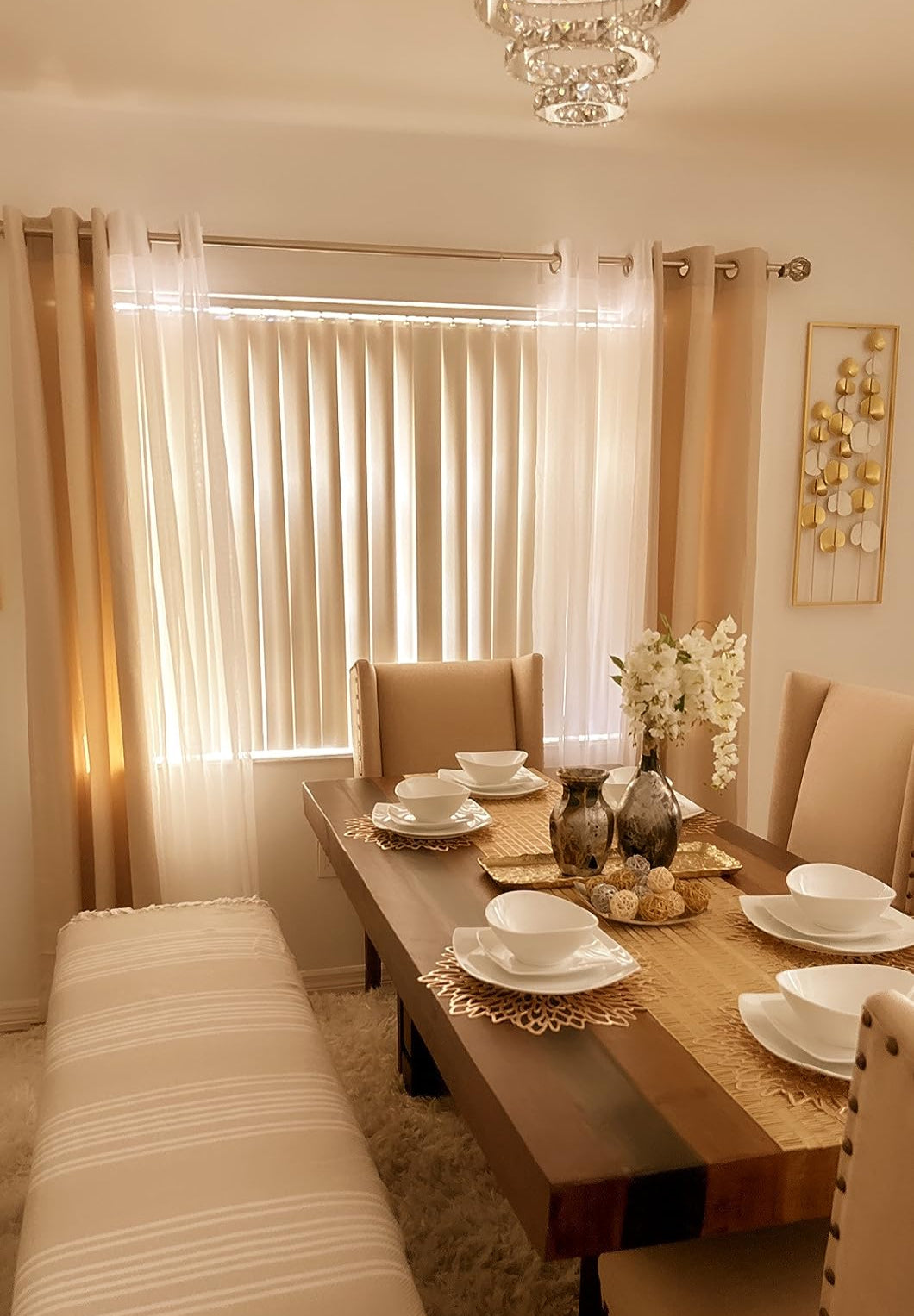
How long does shipping task?
How long does shipping task?
Shipping usually takes 5-10 business days, depending on your location. Expedited shipping options are available for faster delivery. Contact us for any specific shipping inquiries.
How much does shipping cost?
How much does shipping cost?
Free Shipping Your order
What are my payment options?
What are my payment options?
We accept all major credit and debit cards, including Visa and Mastercard. Alternatively, you can opt for quick checkout via PayPal, Apple Pay or Google Pay. You can select your preferred payment method at checkout.
How do I track my order?
How do I track my order?
Once your order ships, you'll receive a shipping confirmation email and tracking number, so you can follow your package as it makes its way to you. However, tracking information can take up to 24 hours to update, so don’t worry if it doesn't show up immediately. You can get shipping information via our order tracking page. We recommend tracking your order and ensuring that you’re home on the day of delivery to receive your order.

Fast Free Shipping
We provide quick order fulfillment (24 hours), Delivery will typically take 3 to 7 days. Free Shipping on All Orders.

30-Day Return
If the goods received are damaged or incorrect due to our error, you may return them within 30 days for an exchange.

1-year Warranty
We provide full product responsibility for 365 days from the date of purchase for most items.

Customer Service
Email: support@dwcnhome.com
Office Hours: Mon-Fri 9am- 5pm


